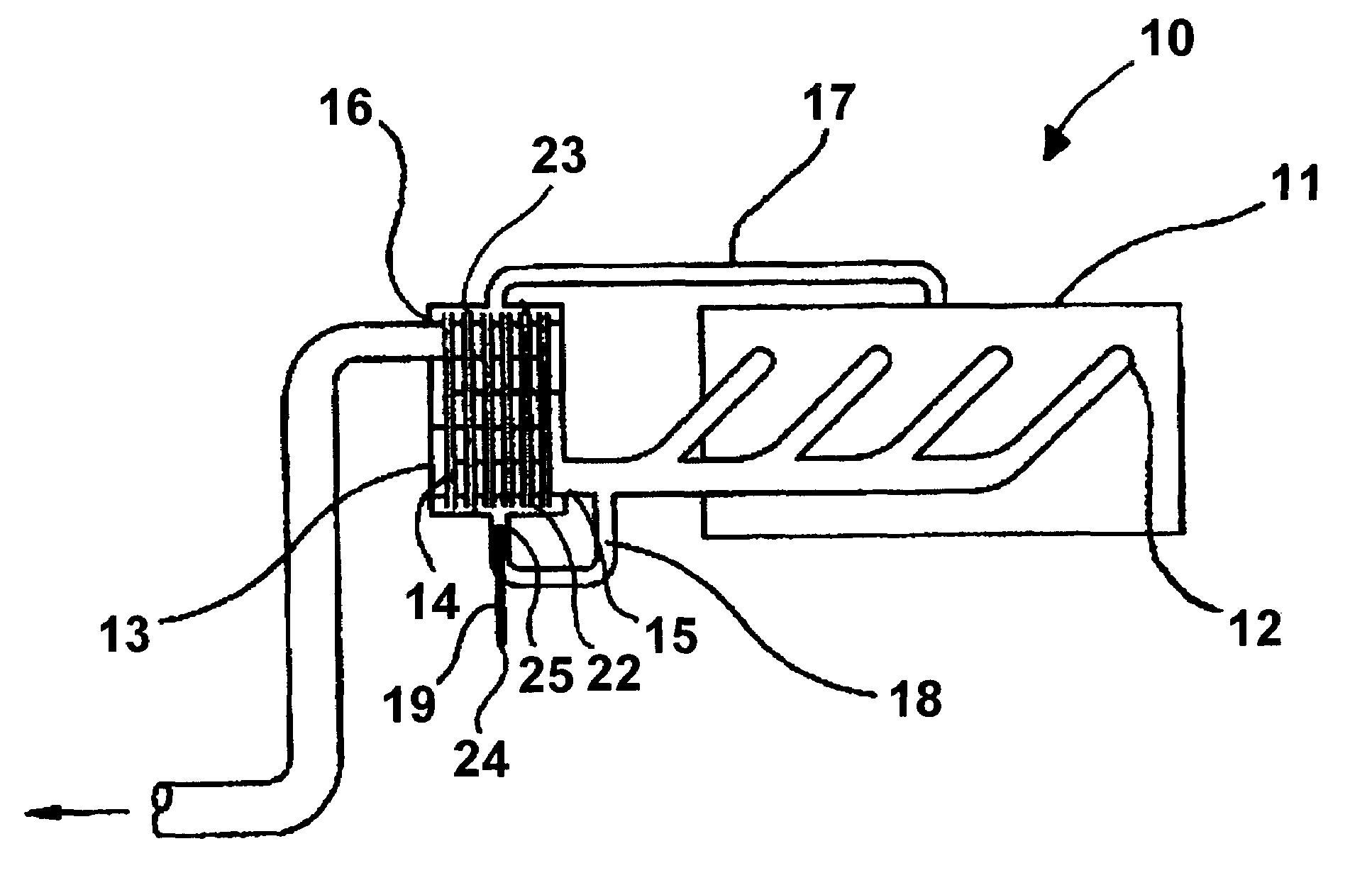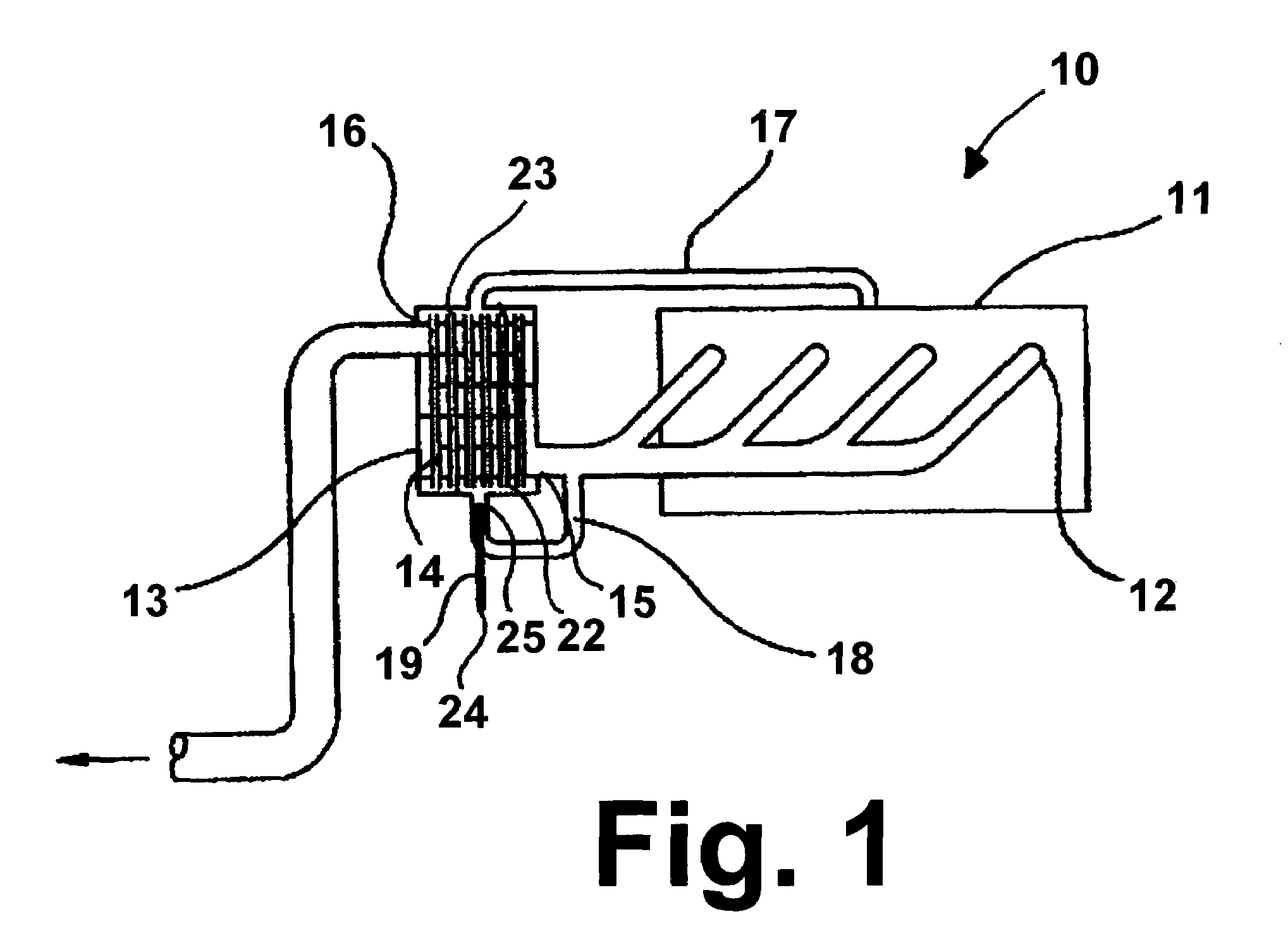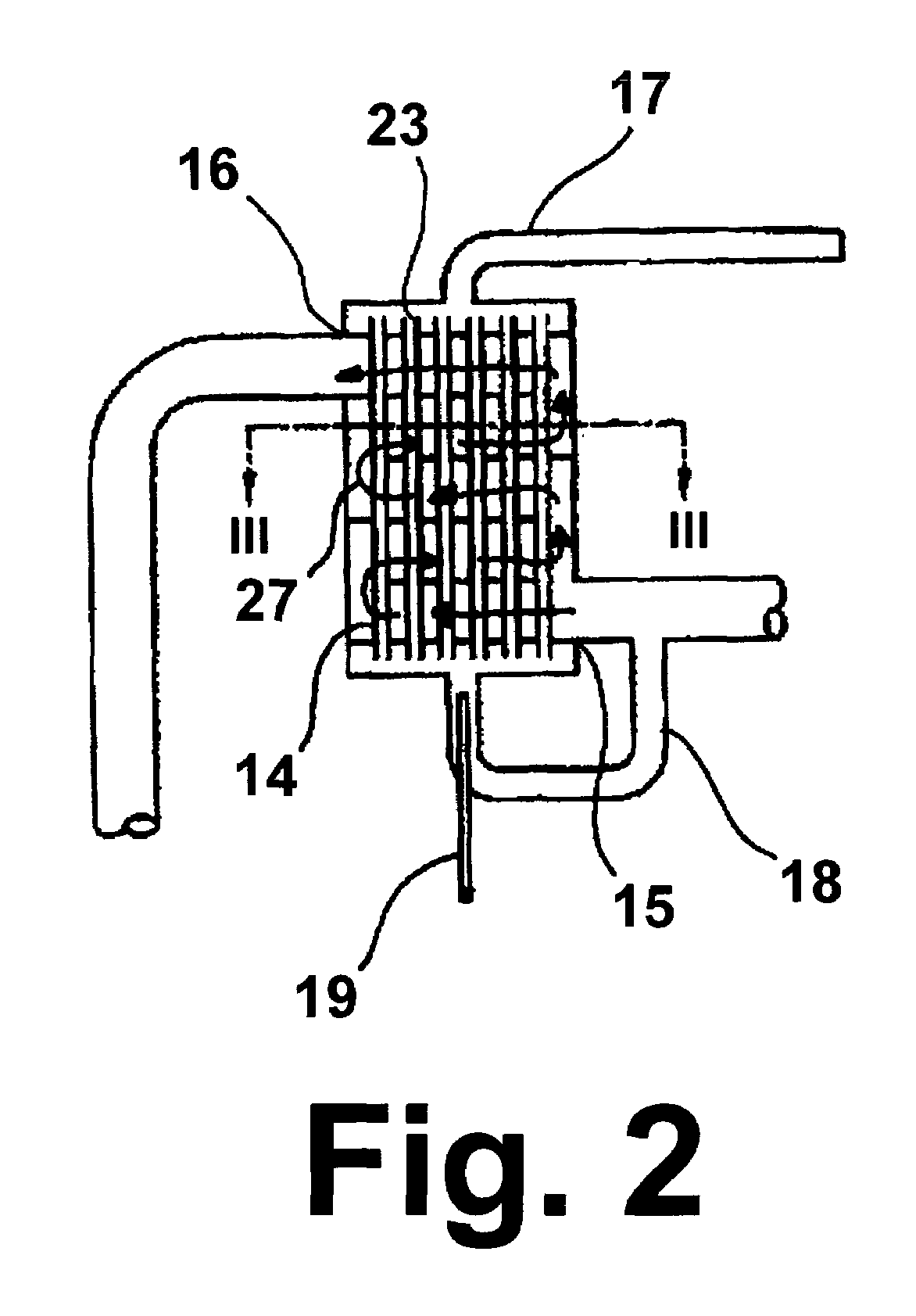Catalytic core reactor for thermochemical heat recovery
a core reactor and thermochemical technology, applied in the direction of machines/engines, mechanical equipment, combustion air/fuel air treatment, etc., can solve the problems of reaction consumption, increased efforts, and often large heat rejection of thermal processes, so as to increase the heating value of fuel, reduce operating costs, and increase engine efficiency
- Summary
- Abstract
- Description
- Claims
- Application Information
AI Technical Summary
Benefits of technology
Problems solved by technology
Method used
Image
Examples
Embodiment Construction
[0026]The invention disclosed herein is a fuel conversion reactor concept that is adapted to the specific requirements of a thermochemical fuel conversion process with special considerations for on-board vehicle installations. In addition to vehicular applications, the reactor concept can also be used for a wide range of other catalytic processes. This process is characterized by low reaction temperatures, typically in the range of about 500° F. to about 1500° F., and can take place at high pressures as is customary in reforming processes or at low pressures such as in thermal decomposition reactions. In fuel reforming, a catalyst is employed to facilitate the reversible reaction of methane with steam to form hydrogen and carbon monoxide. The reactor is particularly well suited for conditions where one reactant operates at a significantly lower pressure than the other reactant. With the heat transfer and catalyst configurations of the reactor of this invention, several advantages ar...
PUM
 Login to View More
Login to View More Abstract
Description
Claims
Application Information
 Login to View More
Login to View More - R&D
- Intellectual Property
- Life Sciences
- Materials
- Tech Scout
- Unparalleled Data Quality
- Higher Quality Content
- 60% Fewer Hallucinations
Browse by: Latest US Patents, China's latest patents, Technical Efficacy Thesaurus, Application Domain, Technology Topic, Popular Technical Reports.
© 2025 PatSnap. All rights reserved.Legal|Privacy policy|Modern Slavery Act Transparency Statement|Sitemap|About US| Contact US: help@patsnap.com



